Learning to Resist: Fighting Development in Castle Rock , CO to Protect Life, Land and Prairie Habitat
27 May
by Deanna Meyer
Last spring as the grasses started greening up and springing across the landscape, I joyfully drove through one of the most magnificent prairie dog colonies left along Colorado’s Front Range. Almost two hundred acres were packed full of the cozy little families all basking in the sun, rolling on the burrows, kissing and playing. The happiness that coursed through me knowing that these beautiful creatures were alive, fat and happy ended abruptly with a knotted stomach when I knew they wouldn’t be here much longer. 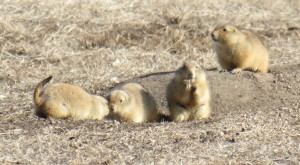 Every colony of prairie dogs, existing today in the small pockets of remaining prairies, is in danger. Every. Single. One. And why? Because of growth. Metastatic growth of our towns and profit lines. Because of the ranchers’ ability to dominate the land with livestock grazing. Because of the deep underlying ignorance of a population that has been fed so many myths that they have forgotten the truth hidden in reality while a false world of predation continually destroys the living systems that matter most to the continued cycle of life.
Every colony of prairie dogs, existing today in the small pockets of remaining prairies, is in danger. Every. Single. One. And why? Because of growth. Metastatic growth of our towns and profit lines. Because of the ranchers’ ability to dominate the land with livestock grazing. Because of the deep underlying ignorance of a population that has been fed so many myths that they have forgotten the truth hidden in reality while a false world of predation continually destroys the living systems that matter most to the continued cycle of life.
Now when I drive through the same area the land is no longer alive with the thousands of prairie dogs that once raced through the landscape, back and forth over burrows, bringing joy to this place and feeding various birds and living creatures. The land is now eerily quiet. No more chirping sounds echoing through the land. Their calls of warning and communication that once brought the land to life, brought the sounds of the living to us, to the people who cared, are now silenced. I take in the sights and smells of a now poisoned land. The memories are still seeping fresh out of the ground and into my mind. Conceiving what once was, only a few short months ago, and what now is, breaks me down into pieces of outrage and sorrow. A few lone survivors peep out and timidly witness what was once their colony’s home. They look sad and lonely, longing for their lives to be what they once were. Their chirping sounds have changed, and will never be the same.
In November of 2014, I saw an article with the headline “Castle Rock getting one of nation’s largest new malls.” I knew what this meant – the death of thousands of prairie dogs. For a mall. Thousands of prairie dogs for a mall that few want and no one needs. I began calling the obvious people for help with the support of my organization, Deep Green Resistance (DGR), as we looked for someone who would help stop the killing of the prairie dogs. We called upon the Humane Society’s Prairie Dog Coalition, WildEarth Guardians, Alberta Development Partners, LLC, and the Town of Castle Rock, all of which were not much help at all. The Prairie Dog Coalition, a relocator with Growing Ideas, a local activist and myself met with the developers. We asked that they allow us to relocate the prairie dogs in June once the mothers had their babies and we could safely and viably relocate the colony. Alberta Development didn’t have much to offer and the most “generous” deal they would give us was to push 100+ acres of prairie dogs into 7 acres of unsuitable drainage land. This was not a viable option. The Prairie Dog Coalition and Southern Plains Land Trust decided that the only available option for them was to get money for the soon to be dead prairie dogs and began begging Alberta Development for mitigation.
The one and only organization of the many I called that came through for the prairie dogs was WildLands Defense. The Board President, Brian Ertz, immediately came to my assistance and began empowering the cause to save this vibrant colony of prairie dogs. More importantly, Ertz prioritized the goals of saving prairie land in general and the habitats themselves over mitigation and damage control. These goals were much broader than relocating or taking money for dead prairie dogs. I immediately became a member and we launched ourselves into this campaign with a variety of strategies: legal; social; media; protests; organizing; and campaign building. All tactics came together as we built up sympathy with the entire world for the plight of the Castle Rock prairie dogs.
On February 17th of this year, people concerned about the large colony of prairie dogs flooded the Castle Rock Town Council meeting and 18 individuals gave incredibly powerful speeches asking the council to consider the wildlife, specifically the prairie dogs, on the Promenade site. The speeches were articulate, clear, from the heart and well informed. Citizens were asking the council to consider postponing the zoning and planned development plan for the mega-mall so that the prairie dogs could be viably relocated in June. With no consideration for the speeches, the council moved to unanimously approve the project and ignore the citizens of Castle Rock and wildlife advocates. Advocates and residents showed up again to the March 3rd meeting for the second reading of the zoning amendment and faced the council with inspiringly beautiful speeches. The council, once again, without hesitation, approved the project and ignored all of the voices of the people. Pressure continued to mount against Alberta Development and the Castle Rock Town Council, but it fell on deaf ears as they refused to take us seriously.
On March 10, Alberta Development made the decision to bring in an extermination company, Animal and Pest Control Specialists, to use the lethal and extremely dangerous pesticide, Fumitoxin, to eradicate this beautiful colony of prairie dogs. Prairie dog supporters protested loud and long as they witnessed the horror unfold. The prairie dogs we fought so hard to save were gassed in their burrows. Castle Rock Police were on the scene protecting the exterminators from the protesters, allowing illegal application of the poison but not the physical expression of our outrage. Fumitoxin causes a slow agonizing death for those unfortunate enough to be gassed with the poison. 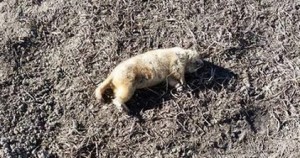 They bleed from the inside out for 3-7 days. Many of the prairie dogs desperately tried digging themselves out of their holes as they experienced the horror only to die on the surface. Activists witnessed ravens dropping dead out of the sky, found red-winged black birds dead on the surface and bunnies writhing in pain to their deaths. The landscape was poisoned and all who touched it faced the same horrible death. Several activists were hospitalized from the poison and many more had symptoms from the poisoning.
They bleed from the inside out for 3-7 days. Many of the prairie dogs desperately tried digging themselves out of their holes as they experienced the horror only to die on the surface. Activists witnessed ravens dropping dead out of the sky, found red-winged black birds dead on the surface and bunnies writhing in pain to their deaths. The landscape was poisoned and all who touched it faced the same horrible death. Several activists were hospitalized from the poison and many more had symptoms from the poisoning.
After four days of poisoning, the exterminators killed over 95% of the prairie dog colony on the site. With hearts broken and rage brewing, the supporters drastically increased their efforts to bring publicity to this issue and to create consequences for the developers that would send a strong message out to any other entity that may be considering the eradication of prairie dog colonies in danger across the western landscape. WildLands Defense advised on-the-ground activists to put the final zoning ordinance for the mall up for a vote to the people by petitioning for a referendum.
Activists hit the streets of Castle Rock for the following month, opening up conversations with Castle Rock residents and listening to the concerns that residents had about the mega-mall and the metastatic growth of our town. We succeeded in getting the necessary signatures to put a multi-million dollar mall up for a vote by the people. The construction of the mall is now on hold until the referendum goes up for a vote. Our success incited rage among some conservatives in the town, and put the Town Council on edge and on notice. Suddenly, after countless town meetings in which petitioners, residents and concerned citizens were met with callous indifference and worse, the Council changed their tone and started to at least act like they were listening to concerns of the people.
The successful zoning referendum secured the immediate survival of the remaining prairie dogs on the site which is currently between 2 and 3 hundred, including new babies, that we are working to have relocated in June. Immediately after the poisoning, we were able to get 87 of them out of harm’s way and to a new land base.
WildLands Defense also initiated a flurry of requests to several of the prospective retailers of the mall from advocates and concerned citizens. These requests pressured the retailers to refrain from building on the Promenade site due to the unethical decisions of Alberta Development to slaughter thousands of animals, poison the land and treat concerned residents and wildlife advocates with complete disregard. Of these retailers, Whole Foods, Costco and Five Guys Burger and Fries made decisions to never build on the Castle Rock Promenade site. This caused immense damage to Alberta Development since these retailers were big elements of the said attractiveness of the mall to the people. WildLands Defense and our supporters plan to continue our relentless demands to prospective retailers insisting that ethical businesses refrain from building on the site of a mass poisoning of wildlife and land.
Alberta Development and the Castle Rock Town Council are surely regretting the decisions they made in February to ignore residents and allow for the approval of a zoning ordinance that gave a green light to Alberta to destroy one of the largest prairie dog colonies on Colorado’s Front Range. Concerned citizens and wildlife advocates were simply asking for a postponement in development so we could safely relocate the prairie dogs on the site slated for the huge mega-mall. Postponement is now secured for several more months than anticipated and the developer is struggling in desperation to convince activists to drop the referendum so he can proceed with his plans for the development of the mega-mall that will level hillsides, destroy further habitat and exacerbate the toxic growth in Castle Rock that many residents don’t want, and certainly no one needs.
The dedication, expertise and passion of WildLands Defense set an example for wildlife advocates on how to approach issues of short grass prairie protections by shifting from an ask nice approach to a political approach that demands attention. The ranching industry has control over our congress and the lawmakers because they know how to exert their power over the political sphere and make demands that promote their interests. Wildlife advocates must start the process of shifting our influence and power into the politics of the regions that destroy land and life by demanding that those in power begin to answer to the concerns of the people. Not until advocates exert power against policy makers and begin to insist on change will wildlife and wild lands be saved.
When I drive around the area that I have grown up in, in Douglas County and Castle Rock, I notice all around me the earth being churned up and replaced with concrete and death. There are numerous prairie dogs living on the landscape in many areas now slated for development and much of the land is going to be developed given the growth plan for our community that is in place with the town and county. The sounds of the prairie dogs chirping rise above the machinery and when you listen closely you can still hear a myriad of bird calls, of wind, of life rustling across the landscape. Life still exists here and wants to live. It is not too late to save what remains of our living planet and to insist on the regeneration of that life.
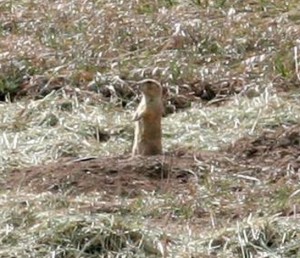 As I head back to the beautiful land base where I live, about 15 miles from the town, I escape all of the mechanical clanging and arrive home. This is where the small handful of the remaining prairie dog survivors has been relocated. They are getting used to the new land, running back and forth, standing sentinel, chirping, jump-yipping, kissing and hugging in the sun. They are getting to know each other again in a different landscape, figuring out the new predators, and settling down in their new home. But their new home is not their true home; it is not where their ancestors have been for decades, where the bones of their loved ones and families are embedded in the land. This land is not where they originated, and they have been through hell on their way here. They will begin to adjust, to call the place home, but the tragedy that happened to them, because of development, must not be forgotten. They lost 95% of their families, their land, their loved ones and were handled, caged, flushed out of their only homes and forced to a foreign land because there are no protections in place for prairie dogs and the prairies they inhabit.
As I head back to the beautiful land base where I live, about 15 miles from the town, I escape all of the mechanical clanging and arrive home. This is where the small handful of the remaining prairie dog survivors has been relocated. They are getting used to the new land, running back and forth, standing sentinel, chirping, jump-yipping, kissing and hugging in the sun. They are getting to know each other again in a different landscape, figuring out the new predators, and settling down in their new home. But their new home is not their true home; it is not where their ancestors have been for decades, where the bones of their loved ones and families are embedded in the land. This land is not where they originated, and they have been through hell on their way here. They will begin to adjust, to call the place home, but the tragedy that happened to them, because of development, must not be forgotten. They lost 95% of their families, their land, their loved ones and were handled, caged, flushed out of their only homes and forced to a foreign land because there are no protections in place for prairie dogs and the prairies they inhabit.
Relocations are not solutions because they do not protect living prairie lands, they do not protect the living beings that have depended on a particular land base for decades if not centuries. Feel-good approaches are just that, expensive but ineffective bandaids. If we are going to make a meaningful difference for life and stop the destruction of land while we retreat, remove and push survivors onto smaller and smaller corners, we need to take a step back and honestly assess our tactics and strategies. We must learn to be bold and begin the hard work of creating polices that initiate cornerstones for real protections of the living prairies we claim to love and fight for. The fight for the prairie dogs is the fight for living landscapes, for the soil, the fungus, the plants, insects, lizards, the species that all depend on that land and the living future of our planet. As a concerned living member of my community, I have learned to step back and assess the possibilities and the necessity that we must start fighting more aggressively and that we need to get to the root of the problems and attack those roots and work for permanent change. It is not enough to save 300 prairie dogs when thousands were gassed just in the last hour. It is not enough as the land that these beautiful animals once occupied is being raped, torn and dismembered. It is not enough to wring our hands in despair. We have to fight. Nothing will live if we don’t begin to fight in ways that the dominators are forced to pay attention to. What are you willing to do to stop the death machine hell bent on eradicating all life on this miraculous planet?
The activists of WildLands Defense in Castle Rock, Colorado made a huge impact in advocacy by resisting the system that allows and encourages the destruction of life with a heavy hand, forcing both government agencies and private developers to take concerns of wildlife and the citizens into account by affecting their own bottom line. Without the political apparatus of the referendum, all of the prairie dogs would have died and the developers, facing no financial or political loss, would continue to steamroll the path for future prairie dog massacres. Our actions have forced developers and town officials to take notice when a prairie dog colony is in harm’s way and local citizens approach them demanding that they do the right thing by taking the wildlife on the land into consideration, and this, of course, is not enough. Activists must continue to push forward and insist that both private and public land occupied by prairie dogs remain short grass prairies by creating policies that force developers and government entities to protect prairie dog habitat. The work ahead of us must change the status of the prairie dog from being considered a “nuisance” species into being the protected keystone species they are, holding our fragmented world into place.
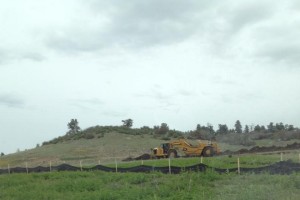 I received a call a few days ago that Alberta Development began grading the land (despite their promises to hold off on such activity) and that their activity was harming the few remaining prairie dogs on the site. Photos of this activity came through on my computer and my heart sank. It wasn’t all about the prairie dogs and the repeated horrors they had to witness as a result of this development. Central to my thoughts was the land, being violently ripped apart for a mega-mall. The earth churned, the plants ripped from their roots, never to grow again once the concrete is poured over the earth, the plovers nesting and flitting about everywhere, the chirping of the prairie dogs panicked, begging for it to stop.
I received a call a few days ago that Alberta Development began grading the land (despite their promises to hold off on such activity) and that their activity was harming the few remaining prairie dogs on the site. Photos of this activity came through on my computer and my heart sank. It wasn’t all about the prairie dogs and the repeated horrors they had to witness as a result of this development. Central to my thoughts was the land, being violently ripped apart for a mega-mall. The earth churned, the plants ripped from their roots, never to grow again once the concrete is poured over the earth, the plovers nesting and flitting about everywhere, the chirping of the prairie dogs panicked, begging for it to stop.
Our group of activists was able to convince the developer to stop, as he claimed there were no prairie dogs there and they showed that certainly there were through videos and pictures. Shortly after, I got into my car and traveled down there to witness for myself the destruction of the land. The graders had churned the land in a circle and in the middle of that circle mountain plovers were flying everywhere looking for their nests, for their eggs and young ones that were growing in those nests in the ground. There were several prairie dogs in the middle running back and forth looking for their homes. The land was breathing the sweet smells of spring clovers and plants were flowering the scents of life, mixed with the churned dirt of mechanized destruction. All was quiet, no more machines, just the sound of the panicked animals and my heart breaking. I looked at the beautiful ridges on the land, at the green ground, at the numerous prairie dog burrows, the gamble oaks full of nests, the birds, the land, and I knew that things would shortly never be the same again. The land’s loss will weigh heavily in the earth, in my bones, in the spirits of the thousands upon thousands of living beings that are still, momentarily, there.
The story is the same everywhere we look. Life is being destroyed and exchanged for commerce, death and profit. Water sources are being sucked dry. Our kin, all of them, are endangered and few actions we take truly protect them. When will we, as activists who really do care about the living planet, take the necessary steps to protect those we love? When will our strategies shift to ones that step outside of the mainstream and into effective actions that curtail the destruction? What are we willing to do, and to risk, to stop the extermination of life as we know it on the planet? With the entire world at stake we are called on to do what is necessary to protect life, and we must answer with nothing less than actions that actually enforce those protections.
As I drive away from the land that was once vibrant with the life of thousands of prairie dogs, eagles, coyotes, grasses, plants, trees and so much more, I say farewell to those beings, those lives that have been stolen forever from the land. I see the plants that have boldly broken through the soil and I smell their scents as they communicate and I feel a deep sadness for what will come to them at the hands of the death churning machinery bringing material goods to a culture of people that are empty shells, willing to replace life for products that attempt to fill a never ending hole of sadness. I look in my rear view mirror and see the hills and the land I have become familiar with since I was a child. My heart breaks open as I realize those hills will be razed and the land will never be the same again.
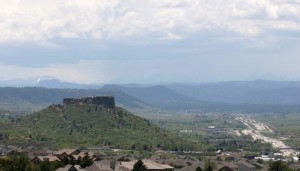 The rape and destruction will leave its story behind forever and the damage can never be undone. I stare ahead and see open prairie land surrounding the town and I know that the plan is for those prairies to become tract homes and developments. I bravely step forward and imagine the impossible, imagine that those lands will not be harmed and that the lives dependent on those lands will be able to continue their existence. My imagination of the impossible begins to turn into determination. The determination to keep the land alive, working with a group of concerned people with love in their hearts, insisting and working for those protections. We will protect the last remaining fragments of our world and insist on the impossible. Those hills and grasslands still exist. They are not being churned into pavement and we plan to keep them that way.
The rape and destruction will leave its story behind forever and the damage can never be undone. I stare ahead and see open prairie land surrounding the town and I know that the plan is for those prairies to become tract homes and developments. I bravely step forward and imagine the impossible, imagine that those lands will not be harmed and that the lives dependent on those lands will be able to continue their existence. My imagination of the impossible begins to turn into determination. The determination to keep the land alive, working with a group of concerned people with love in their hearts, insisting and working for those protections. We will protect the last remaining fragments of our world and insist on the impossible. Those hills and grasslands still exist. They are not being churned into pavement and we plan to keep them that way.
For more information on how you can get involved and help create protections for land and life, contact: info@wildlandsdefense.org
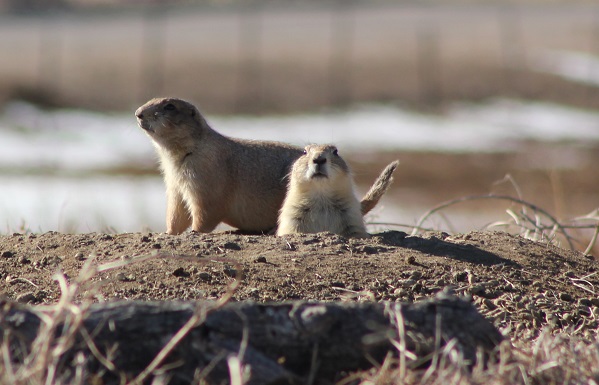
3 Responses to “Learning to Resist: Fighting Development in Castle Rock , CO to Protect Life, Land and Prairie Habitat”